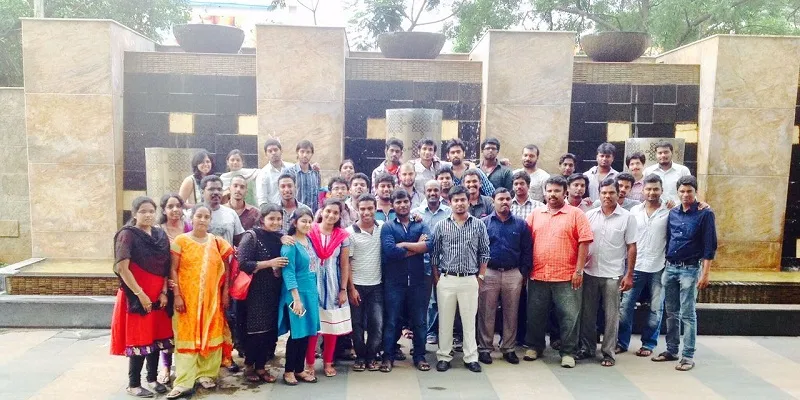The elder sister of the Zoho family, WebNMS is transforming itself from legacy to IoT
Wanting a piece of the $235-billion IoT industry, the company is fashioning itself as a frameworks provider for all industrial applications.
When you are a young company in a large organisation that is quickly heading towards a billion dollars in turnover, the expectations are automatically very high. But WebNMS, instead of running hard. ambled along and even let its younger siblings, ManageEngine and Zoho. get ahead. Not anymore. In 2017, this sub-$50 million-member of the ZohoCorp family is finally getting into its strides.
In the early days, when ZohoCorp was called AdventNet, WebNMS was the subsidiary that handled all the IT needs of telecom clients, a job it did for the last two decades. WebNMS was, in fact, the first product to be born out of AdventNet to manage enterprise networks.

By 2004, it was building applications for telcos in optical transport and wireless access. It even scaled up platforms that managed multi-vendor, multi-layer networks. By 2011, data became larger than voice, and WebNMS began to build dashboards to monitor LTE networks. Foreseeing the rise of machine-to-machine communication, it went into R&D mode under current director Prabhu Ramachandran, who has steered the company into the world of IoT. He believes the current set of innovations for the IoT industry from his team could take WebNMS to a larger revenue stream, eventually turning it into a large company. Says Pabhu,
“The biggest gap we find is the divide between IT and operations or control systems. Both solve problems at their individual layers, which was okay until we plunged into the disruption economy led by Uber and Airbnb.”
He adds that companies need to be on top of their business chain because most seem to be submerged in a web of disparate legacy systems. “WebNMS aims to drive the IT-OT convergence to deliver a unified, intelligent business infrastructure,” he says.
Currently, the IoT enterprise business is a gold mine. Everyone, from pharma to apparel to automotive, is looking at consumer and industrial IoT. The abbreviation IoT stands for nothing but the Internet of Things, where networks and information can be accessed anywhere, on any surface. Gartner Inc. forecasted that 6.4 billion connected things would be in use worldwide by 2016, up 30 percent from 2015, and that this number would reach 20.8 billion by 2020. In 2016, 5.5 million new things were connected every day.
Gartner estimates that the Internet of Things supported total services spending of $235 billion in 2016, up 22 percent from 2015. Services are dominated by the professional category (in which businesses contract with external providers in order to design, install and operate IoT systems); however, connectivity services (through communications service providers) and consumer services will grow at a faster pace.
"IoT services are the real driver of value in IoT, and increasing attention is being focused on new services by end-user organisations and vendors," says Jim Tully, vice president and distinguished analyst at Gartner.
What is happening inside WebNMS
In the outskirts of Chennai, in the cylindrical building that houses the offices of ZohoCorp, Prabhu and his team of 100 engineers are hard at work, having won a couple of large projects in the Middle East. A large corporation that manages street lights wanted to make lighting intelligent and approached Prabhu for a framework. The team quickly built a system that could track the movement of the sun. They asked the infra company to tie up with a telco, and WebNMS used those SIM-cards to study the lat long of the region. The software, which sat in a central location, controlled all the lighting. The company was pleased to save 7 percent on their energy bills, and at least one and a half hours of street lighting was conserved every day.
“Businesses fundamentally require tangible proof of ROI to start deploying software into their long-existing legacy systems,” says Prabhu.
He says that, at present, the company sees enterprises largely adopting IoT, most specifically for optimising and automating energy and operations, and that this is where they've created their most beneficial business value. The customer that used the lighting solution, IMTAC LLC from Oman, had established a separate IoT brand, EmpyrealIoT, that provides multiple managed solutions. It was built and supported on WebNMS’ “Symphony” IoT platform. The solution delivers 15-20 percent energy savings and empowers operators to centrally monitor and automate distributed, city-wide lighting infrastructure, thereby ensuring 98 percent uptime.
The company is also signing a sever partnership with BMTS, one of the largest building technology providers and integrators in the UAE, which manages more than 1,000 buildings and pieces of infrastructure. WebNMS worked closely with BMTS to provide best-in-class Connected Buildings for enterprises to gain a single view of and manage their multiple, fanned out buildings. Their IoT-enabled Connected Buildings solution completes the full operational cycle in concluding maintenance while making information available in real-time, across all teams and stakeholders. It delivers high energy savings, reduces outages and provides improved service efficiency. “Connected Buildings is one area where we've been heavily investing on research and proof of concepts,” says Prabhu.
The next key focus for WebNMS is to take a vertical SaaS approach in IoT to solve industry and domain-specific use cases. They have partnered with a bunch of leading hardware (gateway/sensor) vendors to provide a true plug-and-play IoT environment through connected buildings, connected transport, connected products and remote site automation and management.

The business of IoT
There are over 100 IoT startups in India trying to focus on home automation and automotive solutions. Bosch has created a startup called Bezirk, which uses IoT to track customers in retail stores and send them creative campaigns that are customised for each customer. They work with a petrol station and a couple of retailers in the US. “IoT is an opportunity in the software play. The hardware has to be bought by enterprises,” says Hemanth S., co-founder of Bezirk.
Similarly, Cisco and Airbus have looked at IoT companies in their accelerator programmes.
“IoT allows easy data capture, and actions can be taken through automated software,” says Jayant J., co-founder of Raksha Safedrive.
If you go to the factories of Mahindra & Mahindra in Pune, you will see machines that talk to each other through a platform. This data is tracked by a startup called Covacis, which has built this communications platform.
As this article goes live, Prabhu is on a plane to the US to meet clients and hardware vendors to support the WebNMS suite of IoT products. The company has ambitious plans over the next decade and has already worked with over 15 companies. It is only a matter of time before Prabhu and team make WebNMS a valuable entity in the Zoho family. But it all depends on how corporations marry IoT and its benefits.







